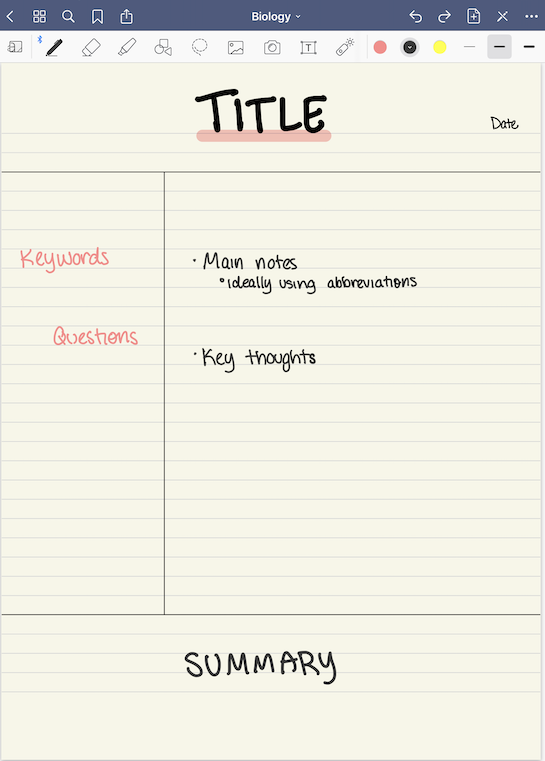The sketching method is perhaps the most common form of note-taking used by college students; an outline naturally organizes the information in a highly structured, logical way and forms a skeleton of the textbook chapter or lecture subject that serves as an excellent study guide when preparing for tests.
Contents
What are the principles of note taking?
Note explained
- stay active and engaged during your lectures, reading and revision.
- understand what you are learning and clarify your thinking.
- be selective and identify key ideas.
- remember the material.
- organize your ideas and make connections.
- plan and structure written assignments.
- review and revise before the exam.
What is the first principle of effective note taking? The first principle of effective note-taking is to identify and write down the main ideas around which the lecture is built.
What are the 4 types of note taking?
Use the four primary methods of note-taking: lists, outlines, concept maps, and the Cornell method.
What are the 3 types of note-taking?
Well, here are 3 different note styles: outline, visual, or Cornell. Outlines and visual notes are quick beforehand, but require more work after class to make them useful. Cornell notes take the most work upfront, but are the most useful later.
How many styles of note-taking are there?
In short, there are two main styles of notes, linear notes and pattern notes, with pattern notes divided into four main types, which are spidergram, table, flowchart and tree diagram.
What is the example of note making?
| Key | Word |
|---|---|
| Intrvw | Interview |
| Deposn | Deposits |
| Dock | Document |
| Ed | Education |
What is note-taking and note-taking with an example? Note-taking involves writing down what you hear or read without processing the information, whereas Notemaking involves processing what you hear or read. I. Note taking is a passive approach to studying whereas Note Making is an active approach to studying.
What is important of note taking?
It keeps you awake. Notes force you to pay attention and help you focus in class (or while reading a textbook). It helps you learn. Studies on learning have shown that actively engaging with the topic by listening and then summarizing what you hear helps you understand and remember the information later.
What is the most important part of note taking? Here’s an easy way to remember the most important points of note-taking: Record: During the lecture, write down all meaningful information legibly. Reduce: After the lecture, write a summary of the ideas and facts using key words as cues.
What is a note called?
Written Notes In order of halving duration, they are: double tone (letters); full notes (semi letters); semitone (minimum); quarter note (crooked); eighth note (quaver); sixteenth note (semiquaver); thirty-second note (semiquaver), sixty-four note (hemidemiquaver), and one hundred and twenty-eighth note.
What do you call a whole note in music? Definition: The musical expression whole note, or semibreve, is worth four quarter note beats and fills a whole bar in 4/4 time. A whole note is written in notation as a slightly enlarged, styleless, hollow note head.
What is a note value called?
In musical notation, a note value indicates the relative duration of a note using the texture or shape of the note head, the presence or absence of a stem, and the presence or absence of flags/beams/hooks/tails. Unchanged note values are fractional powers of two, for example one, one half, one quarter, etc.
What do note values represent?
In music theory, a note value is the length of time a musician emits a certain pitch. Composers, arrangers and musical copyists express note values in written notation on a musical staff.
What is the note symbol called?
Key. A clef is a musical symbol that indicates which notes are represented by the lines and spaces on a musical staff. These symbols often appear at the beginning of the section of a musical staff.
What is a symbol in music?
In sheet music, musical symbols are used to describe the way a particular piece of music should be played.
What is a music note called?
In music, there are specific pitches that make up standard tones. Most musicians use a standard called the chromatic scale. In the chromatic scale, there are 7 main notes called A, B, C, D, E, F and G. They each represent a different frequency or pitch.
What are 5 notes called?
A quintuplet, a type of tuplet, is a group of five notes that â in simple meter â fit into the length of four of its note type.
What are the 7 main musical notes?
In the chromatic scale, there are 7 main notes called A, B, C, D, E, F and G. They each represent a different frequency or pitch. For example, the “middle” A node has a frequency of 440 Hz and the “middle” B node has a frequency of 494 Hz.
What are the 5 music notes?
In traditional Indian music, notes are called svaras and are commonly represented using the seven notes, Sa, Re, Ga, Ma, Pa, Dha and Ni.
Sources :


Comments are closed.